When we think of inventions, we often think of what we believe to be the original one – the wheel – which is said to have initially popped up in lower Mesopotamia (modern-day Iraq) in the 4th millennium, around 4,500 BCE (some sources say it was invented simultaneously in Europe.) These introductory wheels were used as Potter’s wheels; it wasn’t until much later, around 3,500 BCE, that the use of wheels in vehicles began, attached to chariots and wagons.
However, for all the credit the wheel gets for being the first “modern” invention that changed the world, several additional early inventions preceded the disks that simplified travel and transport. Archeologists have uncovered several inventions pre-dating the wheel, indicating that our clever ancestors were innovators thousands of years ago, creating items that have profoundly impacted human development. (Here are ancient inventions we still use today.)
To compile a list of groundbreaking inventions that preceded the wheel, 24/7 Tempo reviewed historical publications on early innovations that occurred before the wheel’s invention from sources including Smithsonian Magazine and Britannica. Several inventions that predate the wheel bring comfort to our lives – shoes have allowed us to walk easier, and safer, and a glass of wine allows us to relax while giving us certain health benefits. Both were invented years before the wheel.
Yet, this is by no means denigrating the wheel, an invention that has had a significant impact on our lives and is of immeasurable importance. But it humans should be recognized for their early ingenious designs that appeared even before the first wheel was rolled out.
Here are groundbreaking inventions that preceded the wheel.
1. Cutting tools
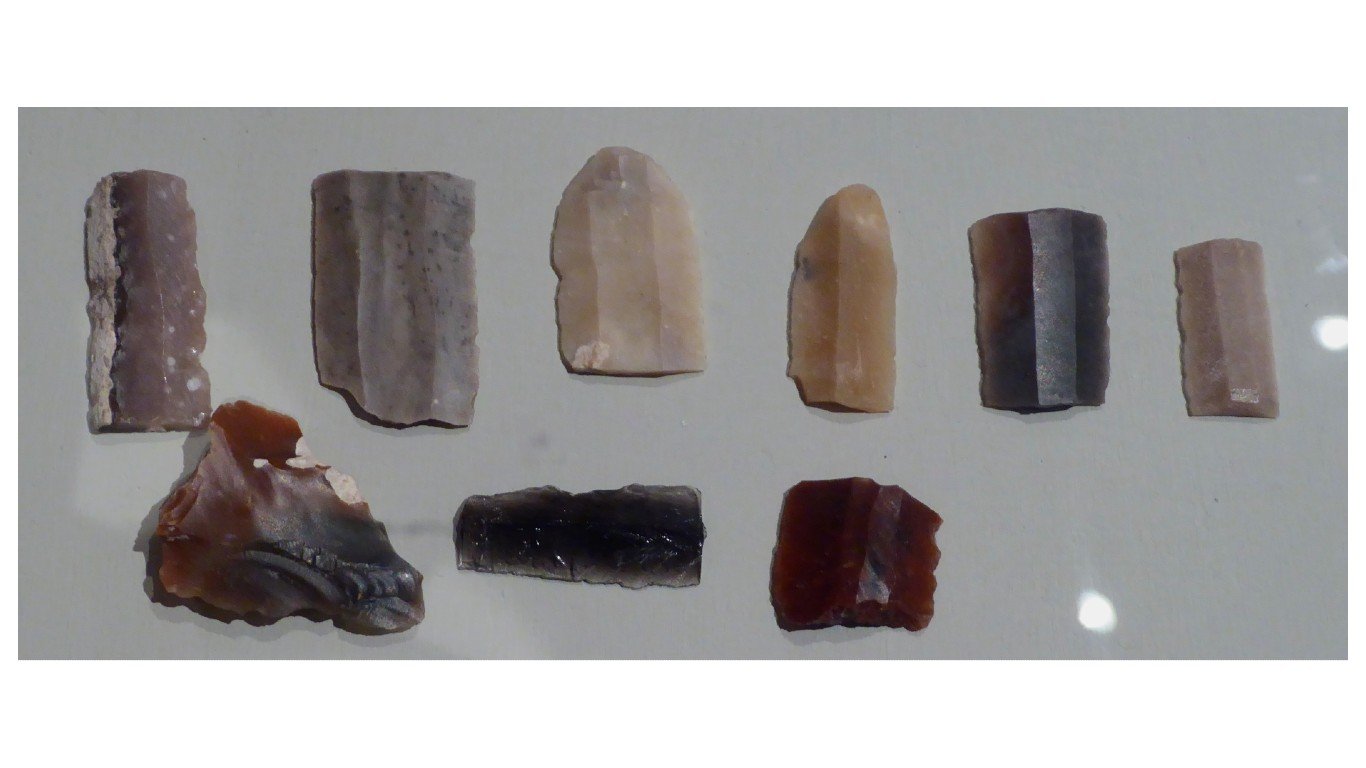
- Earliest known examples: circa 3,000,000 BCE
- Location discovered: Kenya
Early human ancestor Homo habilis invented cutting or stone tools. The process was simple: Take a stone, and smash another stone against it to flake off chips, leaving a sharpened edge and a tool that could be used for cutting. In a clever twist, later human ancestors attached the cutting tool to a shaft for easier handling.
2. Art
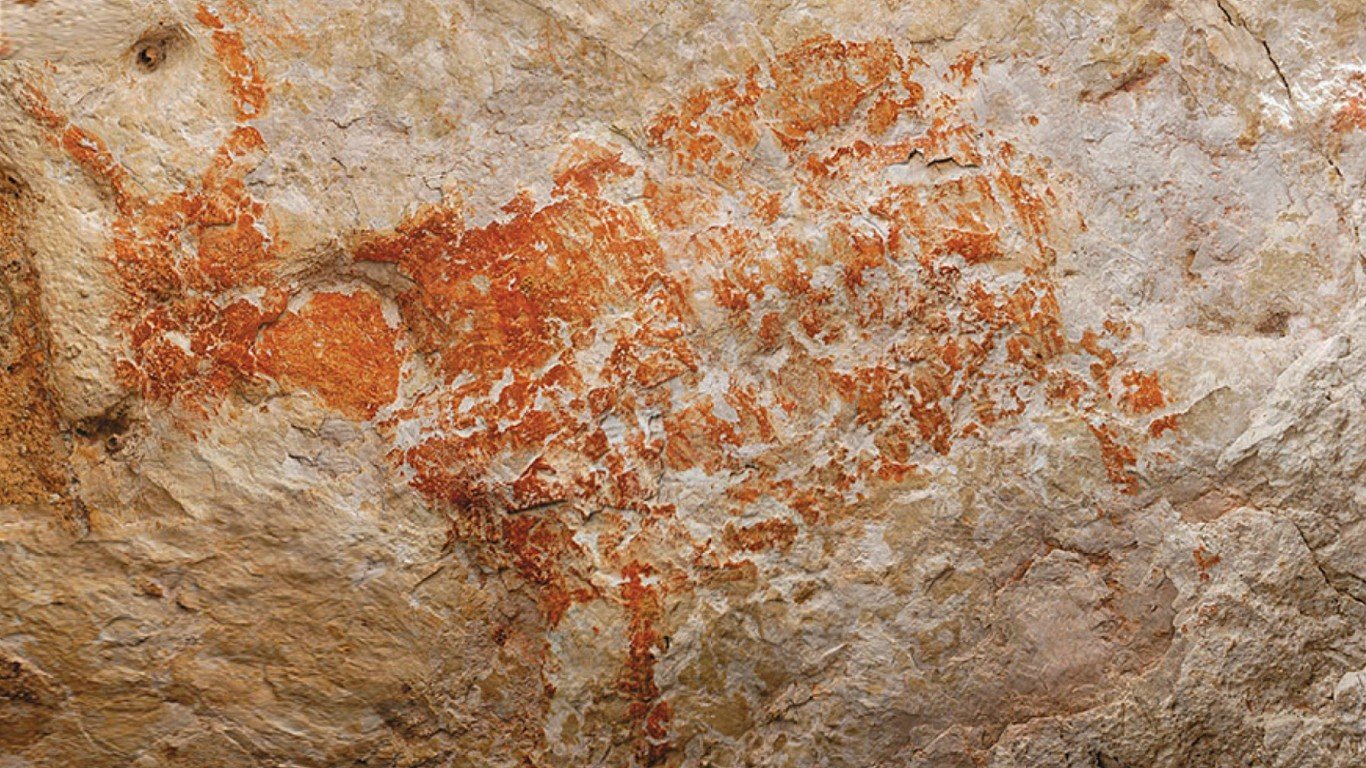
- Earliest known examples: circa 100,000 BCE
- Location discovered: South Africa
When we think of ancient art, we think of cave paintings like the ones dating back 40,000 years or more that were found in Europe. One of the discoveries included a depiction of three feral pigs in a cafe on the Indonesian island of Sulawesi that has been dated at 45,500 years of age. Another was a red hand stencil in Maltravieso cave, Cáceres, Spain. But shells that might have been used as paint pots and the remains of red ochre and yellow dyes dating back to around 100,000 B.C. have been found in a cave in South Africa, hinting at our ancestors’ earliest attempts at art.
3. Bow and arrow
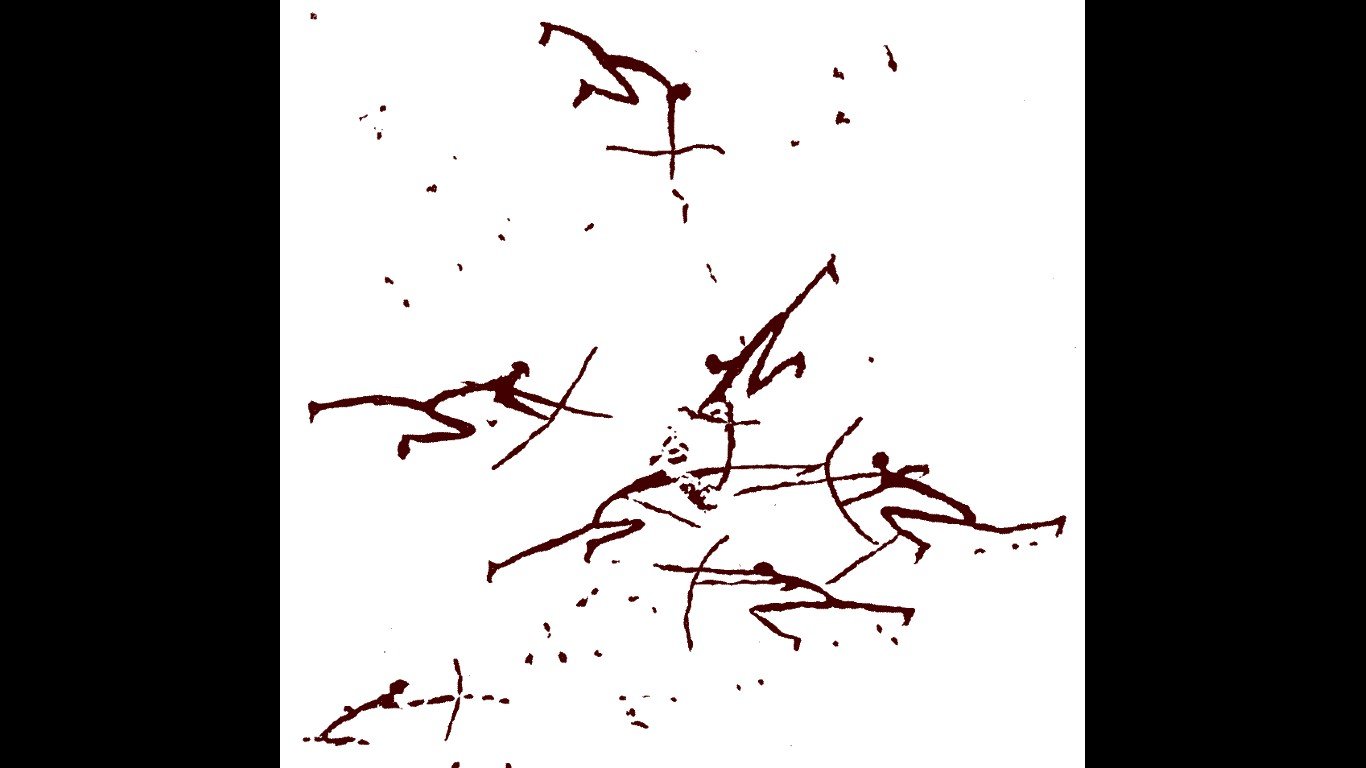
- Earliest known examples: circa 72,000-60,000 BCE
- Location discovered: South Africa; Sri Lanka
The first examples of the bow and arrow have been found in South Africa and Sri Lanka. The earliest European examples are much more recent, found in Germany and dated to around 16,000 B.C, The invention played an important role in human development. With a bow and arrow, our ancestors could kill game (or human enemies) from a distance, not risking death from an up-close encounter.
4. Flute
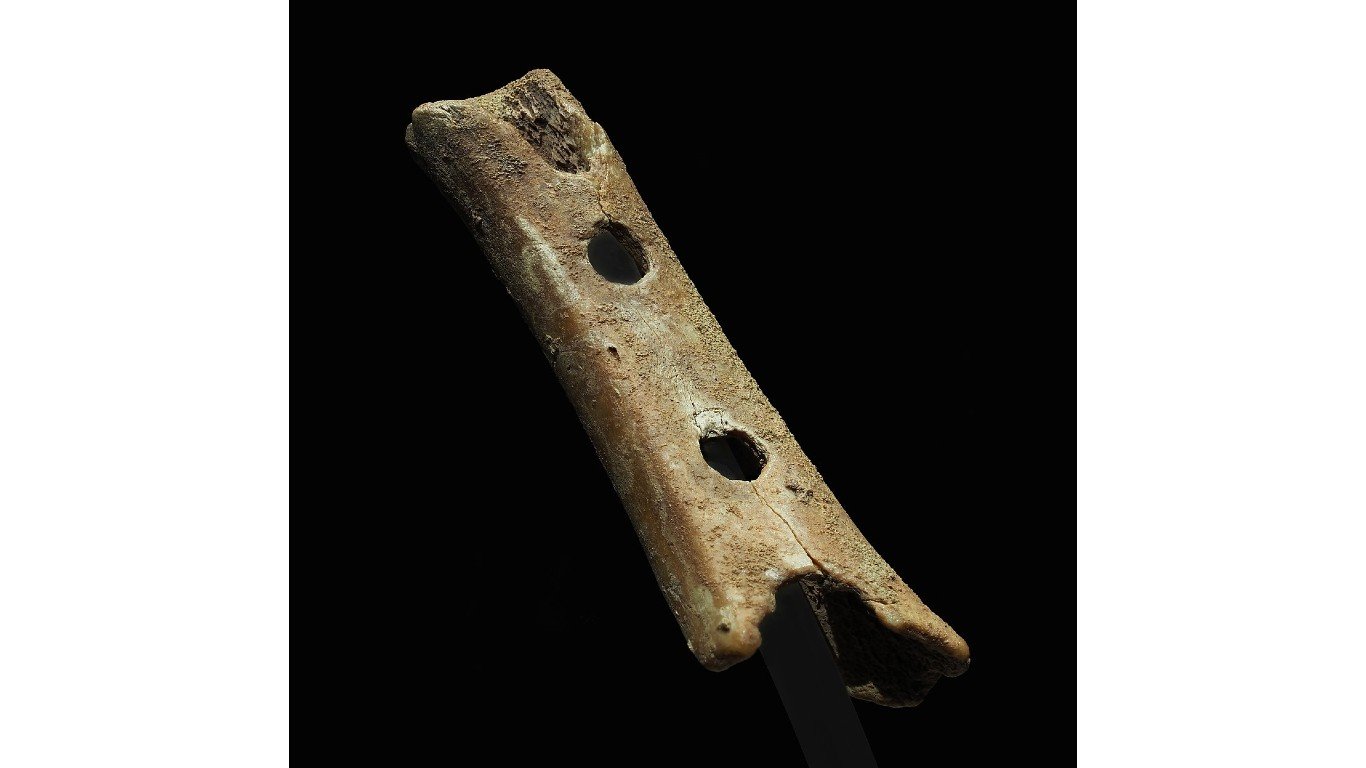
- Earliest known examples: circa 60,000 BCE
- Location discovered: modern-day Slovenia
Neanderthals are often characterized as backward or uncivilized but this hypothesis may perhaps be incorrect. These pre-historic humans loved music and even invented the earliest flutes around 60,000 B.C. The first one discovered was fashioned from the thigh bone of a young cave bear and punctured with four holes.
5. Rope

- Earliest known examples: circa 50,000 BCE
- Location discovered: France
It seems that Neanderthals were quite crafty, having also invented rope. By weaving fibers from the bark of conifer trees into one long string, which could be used to make nets, bags, or clothing, they were able to create an incredibly useful object. The first rope was found in a cave in France, and a tool for making rope, dating from around 40,000 B.C., was found several years ago in Germany.
6. Sewing needles
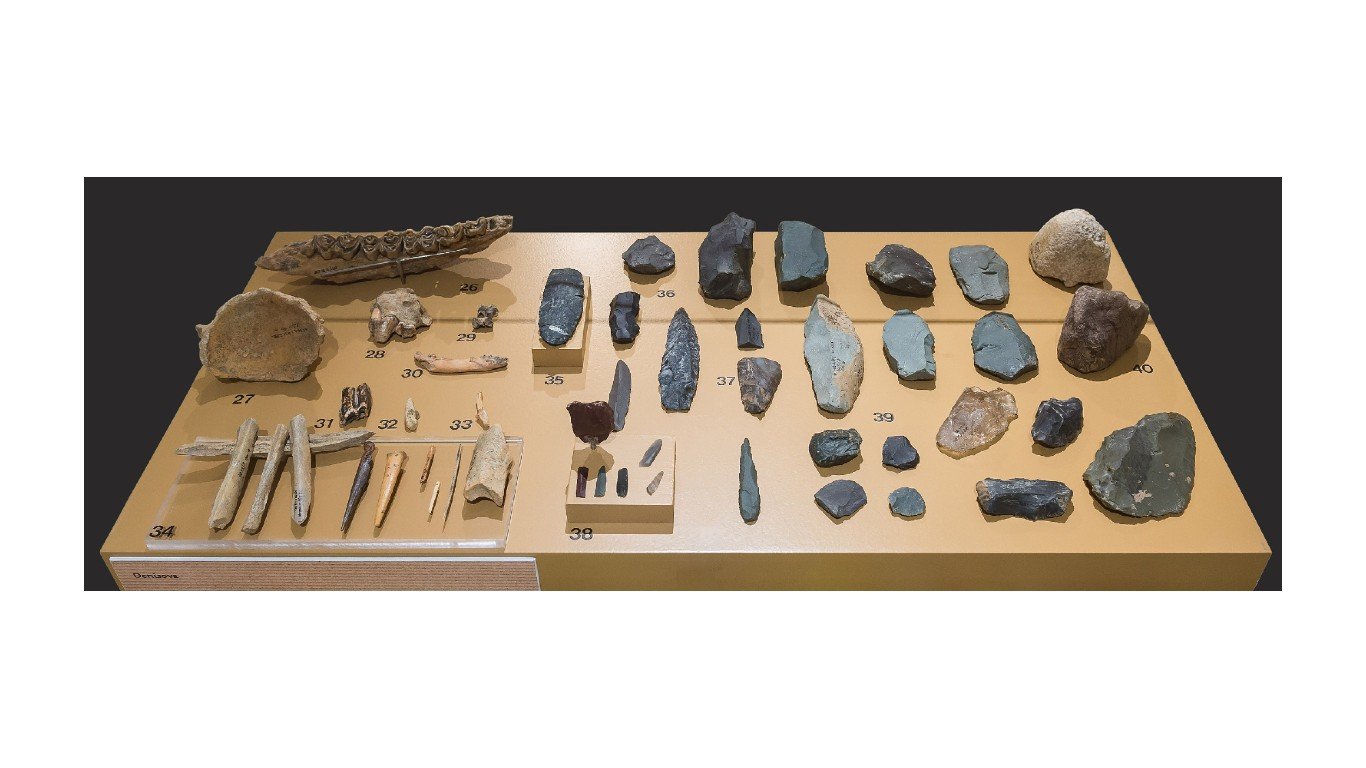
- Earliest known examples: circa 50,000 BCE
- Location discovered: Siberia
The first sewing needle was made of bird bone with an opening for thread at the top. About three inches long, it could still be used today for sewing. Archaeologists believe the sewing needle was crafted by an extinct subspecies of humans known as the Denisovans.
7. Agriculture
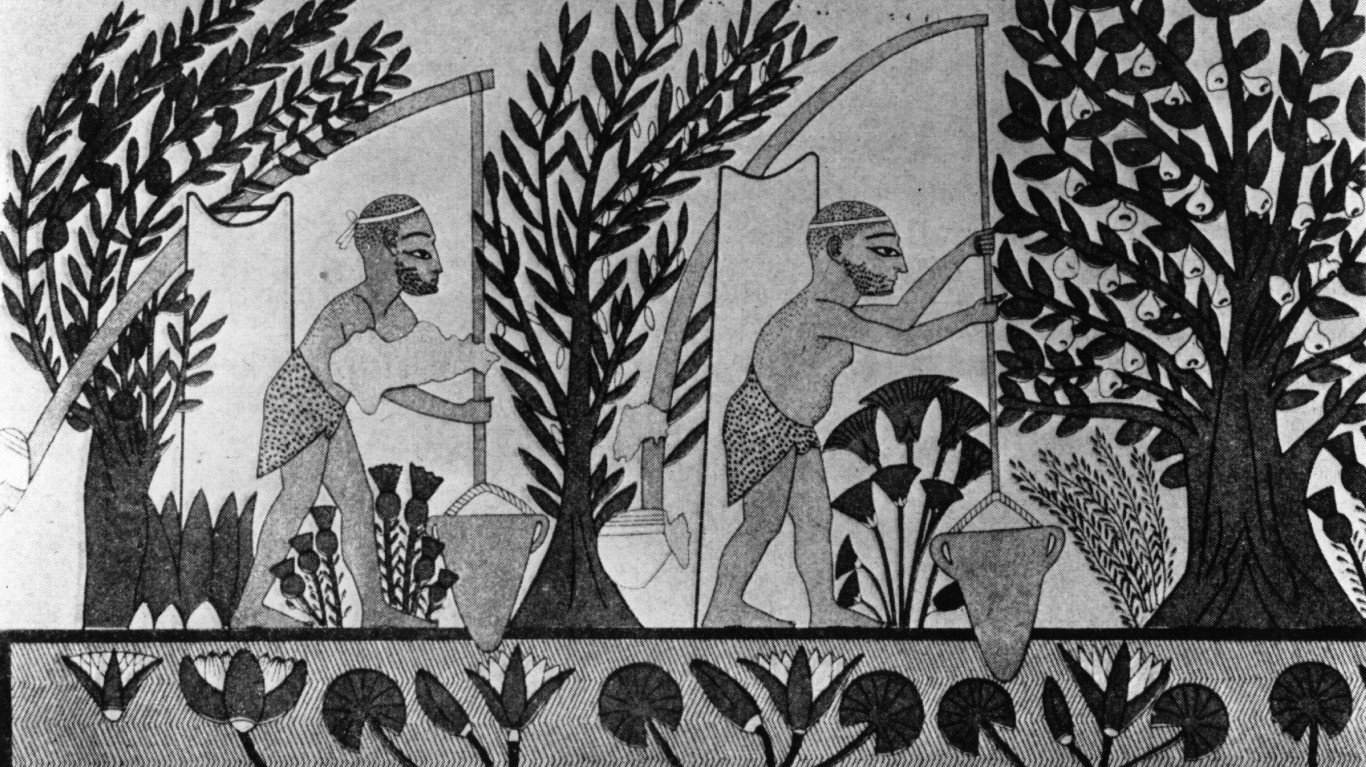
- Earliest known examples: circa 21,000-3000 BCE
- Location discovered: Middle East; Mesopotamia
Some may argue that agriculture is a development rather than an invention but it can’t be denied that this technology, the cultivation of plants and raising of livestock, allowed humans to escape their nomadic lifestyles and develop settlements, towns, and cities. Archaeologists have identified 11 separate regions of the world in which agriculture developed, and it grew in increments over many millennia, with the oldest examples dating back 23,000 years in the Middle East. Among the earliest known crops included emmer wheat, oats, barley, peas, lentils, chickpeas, and flax. The first farm animals to be domesticated were sheep, around 11,000 BCE in Mesopotamia.
8. Baskets
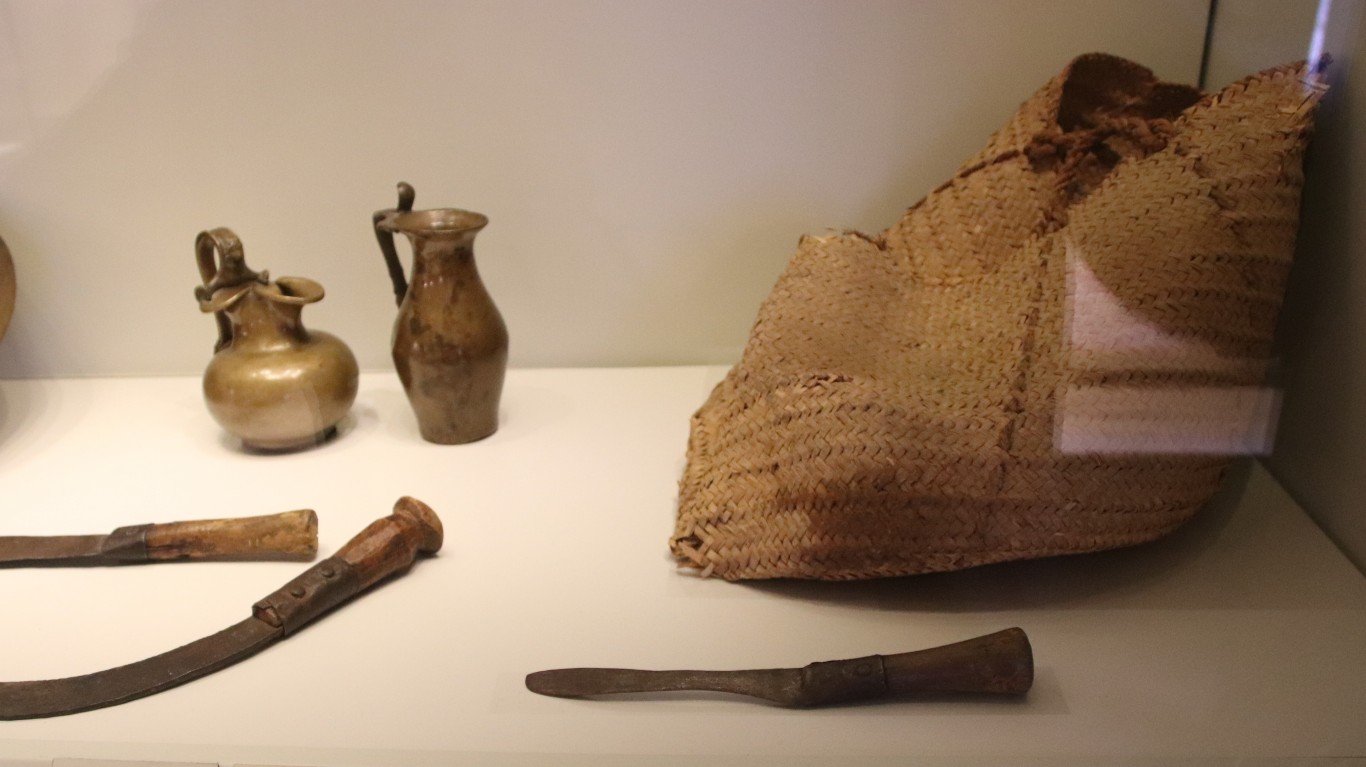
- Earliest known examples: 8500 BCE
- Location discovered: Judean desert in modern-day Israel
The oldest basket known to man was discovered in 2021 and was made about 10,500 years ago during the Pre-Pottery Neolithic period. Archeologists aren’t sure what it was made of, but it had a lid and could hold about 92 liters (24 gallons or 203 pounds) of something. Those who discovered it were able to discern that it was crafted by two people, one of whom was left-handed.
9. Boats
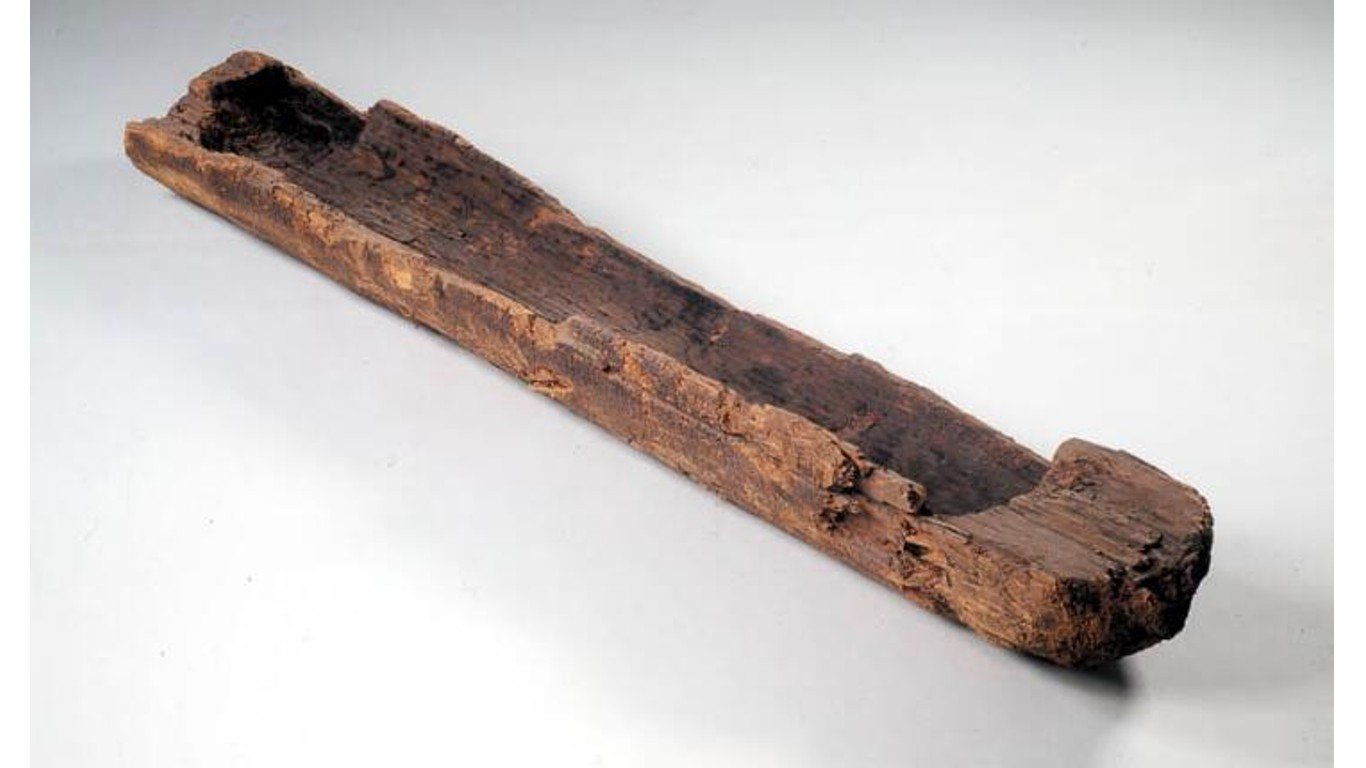
- Earliest known examples: circa 8000 BCE
- Location discovered: Netherlands
Before we conquered the air with planes, we floated over the water with boats. The earliest evidence of these water crafts, called Pesse canoes (after the Dutch village near where the oldest example was found), were simply hollowed-out tree trunks, a simple yet effective creation.
10. Shoes
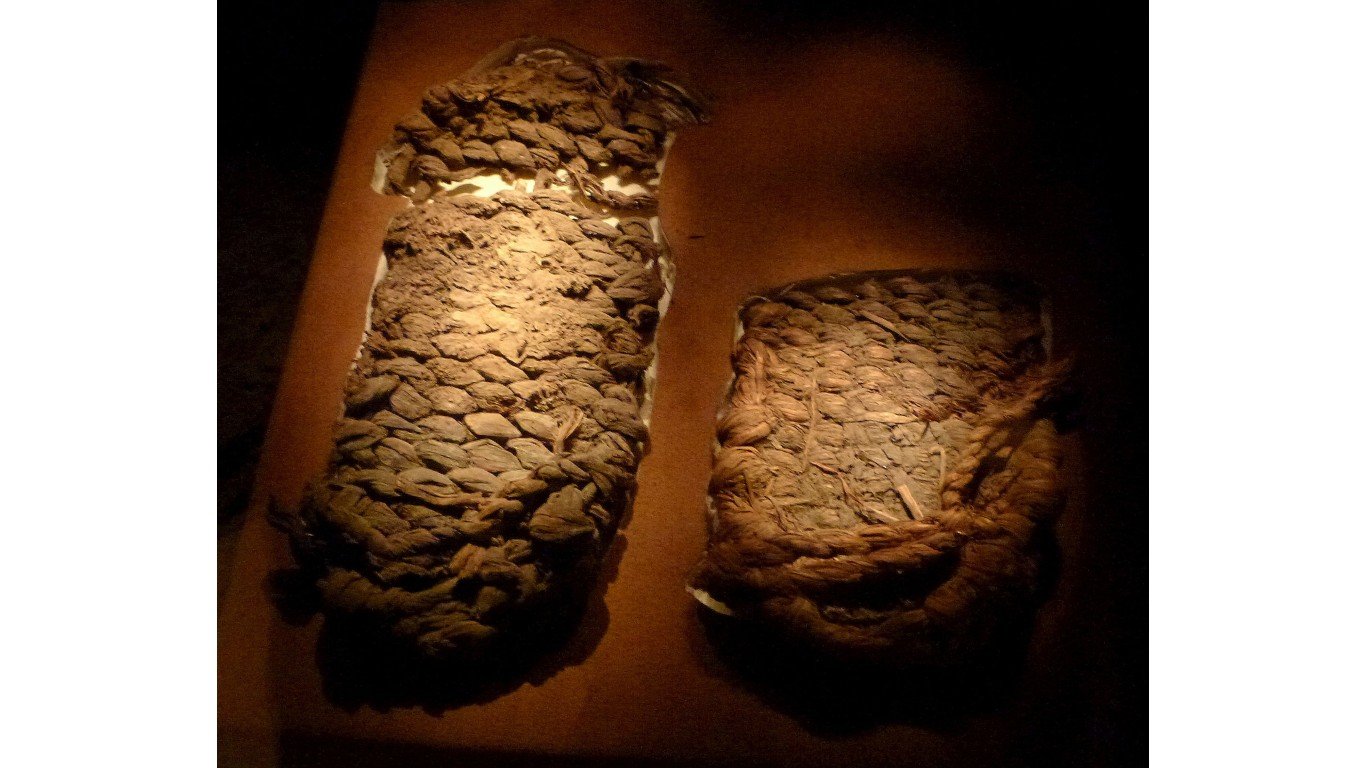
- Earliest known examples: circa 8000 BCE
- Location discovered: America; China; Armenia
We may find it uncomfortable – and unsanitary – walking across pavement but our ancient ancestors had to deal with much more until the shoe came along. Where it was invented isn’t entirely sure. The earliest examples found thus far are sandals made from bark, discovered in a cave in Oregon, United States. The earliest leather shoes, dating from around 3500 B.C., were found in Armenia.
The first example of a shoe was found in caves in America, China, and Armenia and it is thought that the Chinese may have been wearing shoes of some sort as early as 40,000 B.C. Archaeologists arrived at this belief based on changes in the shape of feet and toes that indicate the wearing of foot coverings.
11. Bricks
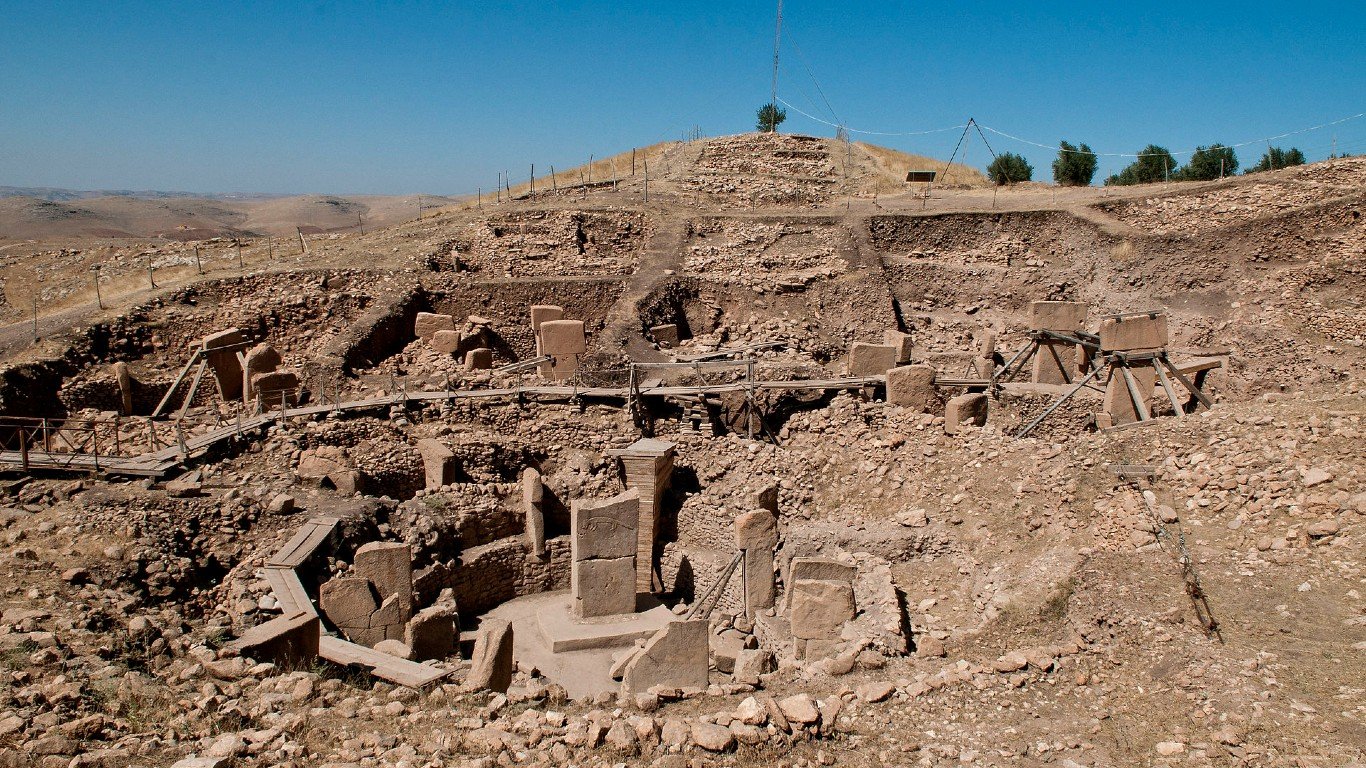
- Earliest known examples: circa 7500 BCE
- Location discovered: southern Turkey
We take bricks for granted, but without these humble inventions, we couldn’t build roads or our homes. The forebears of modern bricks were made of dried earth, either of earthen clay or mud left to dry in the sun. The oldest surviving bricks were discovered near the city of Jericho.
12. Wine
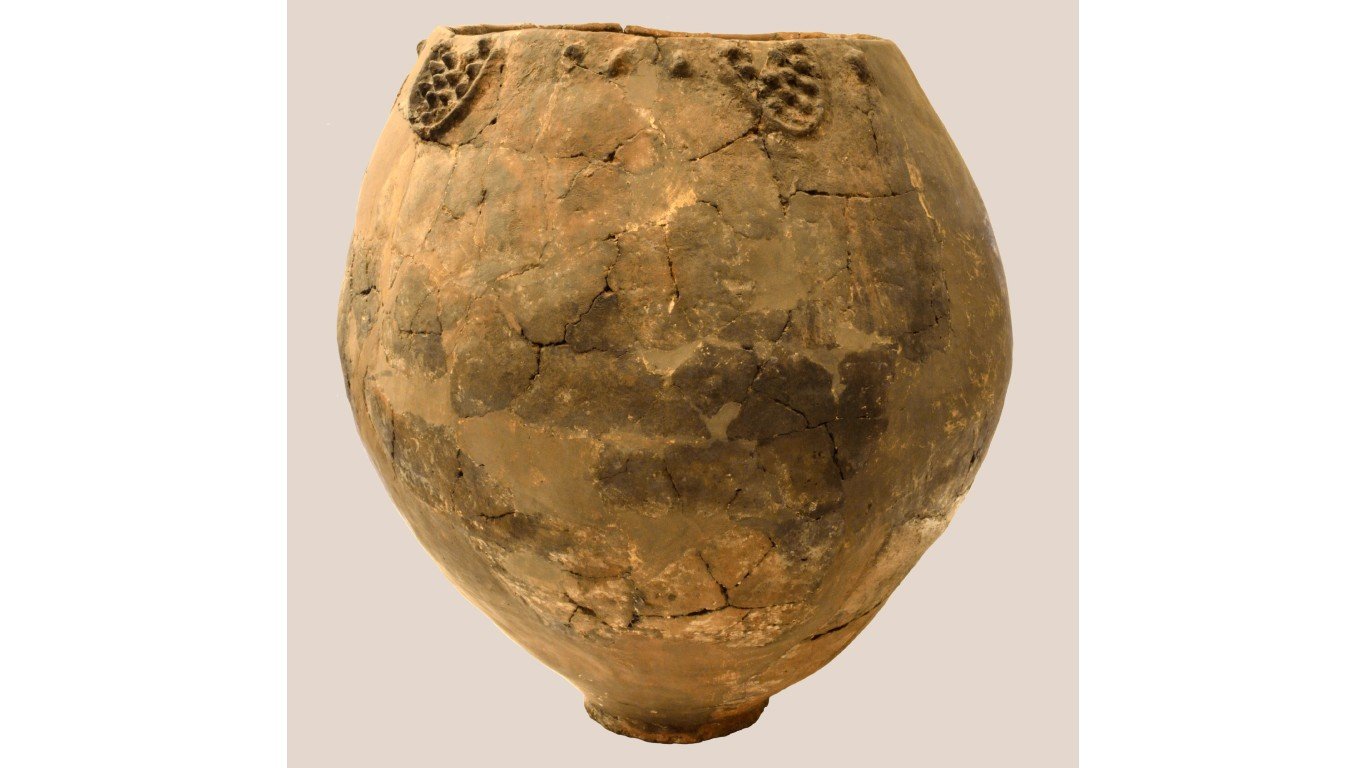
- Earliest known examples: circa 7000/6000 BCE
- Location discovered: China; Georgia
At the Jiahu archeological site in China’s Henan Province, archaeologists discovered a ceramic jar about 9,000 years old that had been filled with rice, honey, and fruit to make a sweet alcoholic concoction. It is uncertain whether grapes were used, but the earliest undisputed evidence of grape wine, dating back about 8,000 years, is residue found in jars near the Georgian capital of Tbilisi.
13. Textiles
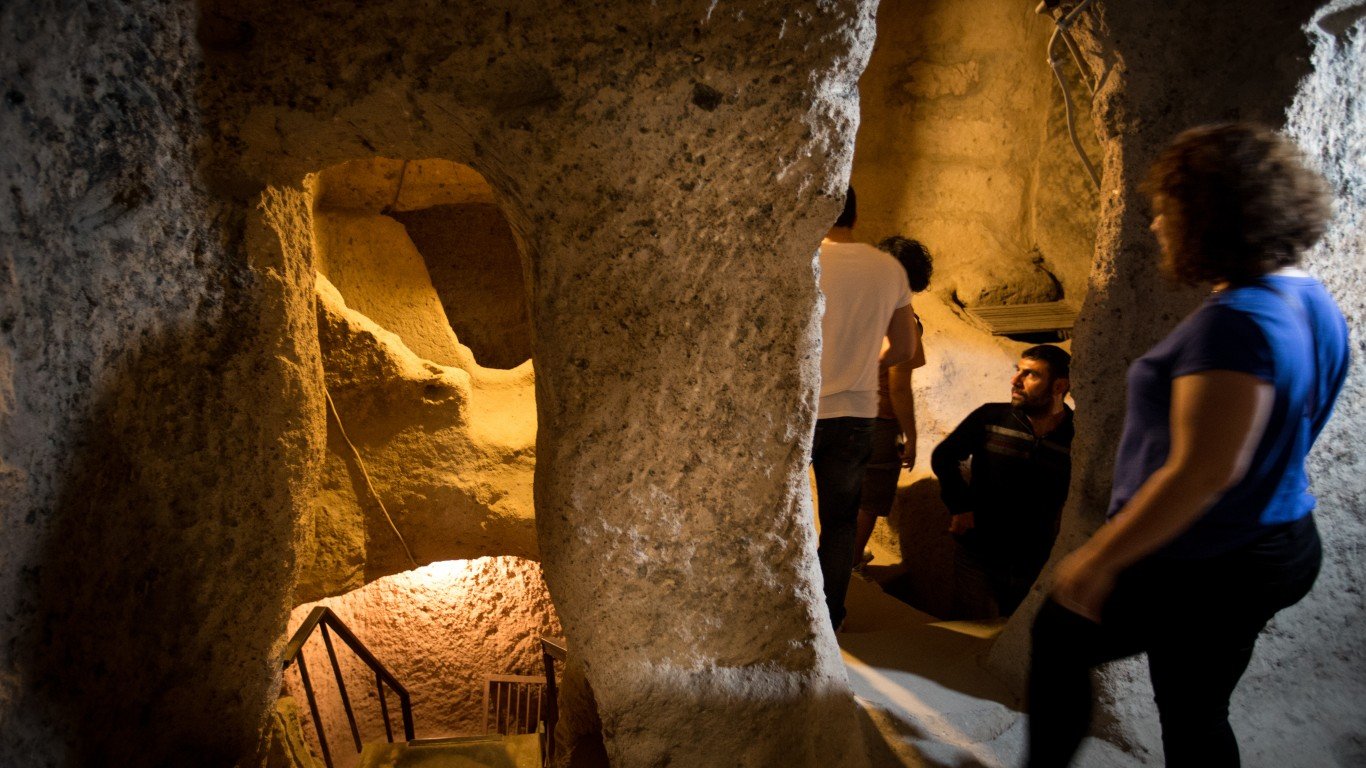
- Earliest known examples: circa 6000 BCE
- Location discovered: Anatolia (now Turkey)
Organic (and in modern times, also inorganic) fibers woven into textiles, were able to make clothing, coverings, baskets, and other useful items. But pinpointing the origins of woven cloth is difficult. Organic fibers degrade quickly and thus are hard to find in archeological digs. While some archaeologists have used evidence of objects used in the weaving process to posit much earlier dates, and while flax fibers of the kind used for textiles have been dated back to around 32,000 B.C., the earliest actual woven fabric discovered to date are funeral wrappings carbon-dated to 6000 B.C.
14. Glass

- Earliest known examples: 4000 BCE
- Location discovered: Syria; ancient Egypt; Lebanon; Mesopotamia
Obsidian glass forms when lava from a volcano eruption quickly cools and hardens into a rock. This naturally occurring glass was used during the Stone Age. But man-made glass was first observed 6,000 years ago, having first been made into jewelry (most often as beads), knives, and arrowheads, and glass was even used as currency in ancient times.
